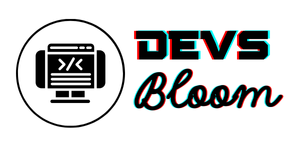Introduction
Your website is often the first impression potential customers have of your business. In today’s digital age, your brand identity goes far beyond logos and color palettes—it’s about the overall experience your audience has when visiting your website. WordPress themes play a critical role in shaping that identity.
With thousands of free and premium themes available, WordPress makes it easy for businesses to create professional websites. But your theme choice influences much more than how your site looks. It affects user experience, performance, functionality, and how well your brand message is communicated.
In this post, we’ll explore how WordPress themes shape your brand identity, what to look for when choosing a theme, and how to customize it for your business.
1. Why Brand Identity Matters
A strong brand identity sets your business apart in a crowded market. It reflects your values, mission, and personality, helping customers connect with your business emotionally.
Key elements of brand identity include:
- Logo and typography
- Color palette
- Tone of voice
- Website design and visuals
Your website is the central hub where all these elements come together, and your WordPress theme is the foundation of that hub.
2. How WordPress Themes Influence Branding
Visual Appeal
Themes dictate the layout, typography, and overall design of your website. The right theme ensures your site looks professional and aligns with your brand aesthetics.
User Experience
Themes affect navigation, readability, and interactivity. A poorly designed theme can confuse visitors, while a clean, intuitive theme enhances brand trust.
Performance
A lightweight, optimized theme improves site speed, which directly impacts user satisfaction and SEO rankings. A slow theme sends the wrong signal about your brand’s reliability.
Consistency
Consistency builds recognition. WordPress themes allow you to standardize fonts, colors, and layouts across all pages, ensuring a cohesive brand experience.
3. Choosing a WordPress Theme for Your Brand
When selecting a theme, consider the following:
- Business Goals: A law firm might need a professional, minimalist theme, while a creative agency could choose a bold, colorful one.
- Target Audience: Think about who you’re designing for. A corporate client has different expectations compared to a young, tech-savvy audience.
- Functionality: Choose a theme that supports essential features (e-commerce, blogs, booking systems) relevant to your business.
- Customization Options: Ensure your theme allows easy changes to colors, fonts, and layouts to reflect your brand identity.
- Performance and SEO: Look for lightweight, responsive themes optimized for search engines.
4. Free vs Premium WordPress Themes
Free Themes:
- Great for startups and small businesses on a budget
- Offer limited customization and support
- Usually simpler in design and features
Premium Themes:
- Provide advanced design options and features
- Regular updates and customer support
- Greater flexibility to match your brand’s unique needs
If you want your website to stand out and reflect your brand effectively, a premium theme is often worth the investment.
5. Customizing Your WordPress Theme
Customization is where your brand identity truly shines. With WordPress, you can:
- Change Colors: Match your theme colors with your brand palette to create visual harmony.
- Update Fonts: Typography communicates personality. Use fonts that align with your brand voice—professional, playful, or modern.
- Add Your Logo: Place your logo prominently in the header or footer to boost recognition.
- Layout Adjustments: Rearrange sections to highlight your most important content (services, testimonials, CTAs).
- Use Brand Imagery: High-quality photos, graphics, and icons reinforce your brand’s story.
6. How Themes Affect User Perception of Your Brand
- Professionalism: A sleek, modern theme conveys trustworthiness.
- Innovation: Creative layouts and bold visuals suggest your brand is forward-thinking.
- Reliability: A clean, minimal theme signals stability and professionalism.
- Friendliness: Bright colors and playful fonts make your brand approachable.
Your theme sets the stage for how users perceive your business before they read a single word.
7. The Role of Responsive Design in Branding
Responsive design ensures your brand looks consistent across all devices. A theme that adapts to mobile, tablet, and desktop screens strengthens brand credibility and user trust.
If your website fails to display properly on mobile devices, it creates a negative impression that can damage your brand reputation.
8. Integrating Brand Voice into Your Theme
Your theme’s design should complement the tone of your content. For example:
- A corporate theme with structured layouts fits formal language.
- A creative theme with bold colors supports conversational, playful copy.
This integration ensures your brand identity is consistent across both design and messaging.
9. SEO and Performance as Part of Brand Identity
A fast, SEO-optimized website shows visitors your brand values efficiency and professionalism. Poor performance, on the other hand, can frustrate users and harm your credibility.
Choose themes with:
- Clean, lightweight code
- Mobile optimization
- Compatibility with SEO plugins (like Yoast or Rank Math)
10. Case Study: WordPress Theme Impact
Imagine two businesses offering the same service:
- Business A: Uses a generic, outdated theme with slow loading times. Visitors find it hard to navigate, and the site looks unprofessional.
- Business B: Uses a modern, customized WordPress theme with consistent branding, fast speeds, and easy navigation. Visitors trust the site and engage more.
The difference lies in the theme’s ability to represent the brand effectively.
11. Future Trends in WordPress Themes (2025 and Beyond)
- Minimalist Designs: Clean, clutter-free layouts that highlight key content.
- Dark Mode Options: Enhancing user comfort and modern aesthetics.
- AI Integration: Smart features for personalization and recommendations.
- Interactive Elements: Animations, micro-interactions, and 3D visuals for engaging experiences.
- Sustainability-Focused Designs: Themes optimized for low energy consumption and eco-friendly hosting.
Adopting modern trends ensures your brand stays relevant and appealing.
Conclusion
Your WordPress theme is more than just a design template—it’s a powerful tool that shapes how customers perceive your brand. From color schemes and typography to responsiveness and SEO, every detail contributes to your brand identity.
At DevsBloom, we specialize in WordPress website design and development, helping businesses select and customize themes that reflect their unique brand personality. Whether you want a sleek professional look or a bold creative identity, we ensure your website communicates your values and engages your audience.
Your brand deserves more than just a website. It deserves an online presence where ideas bloom. 🌸






